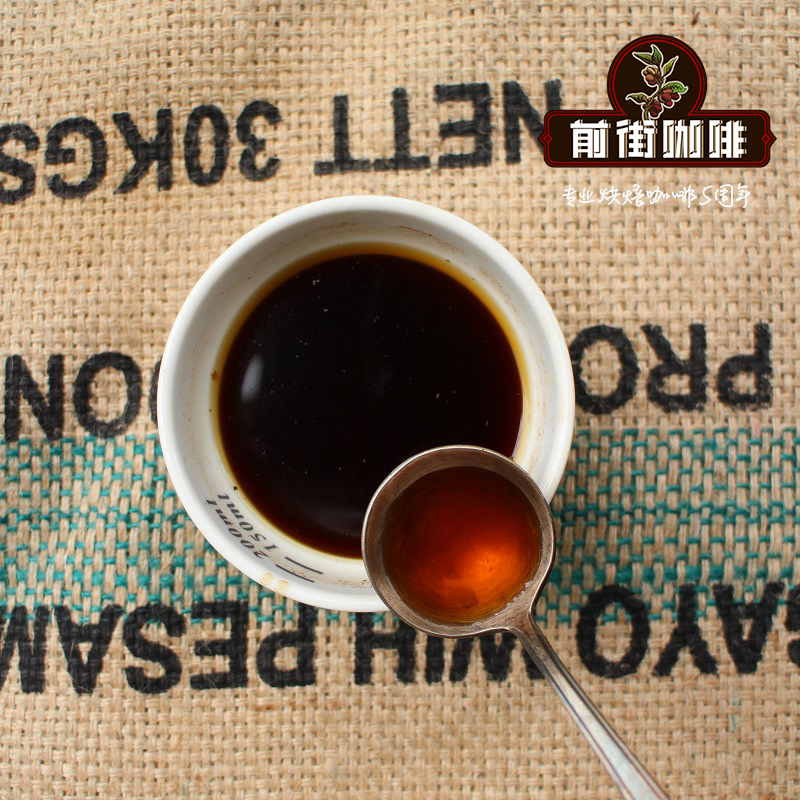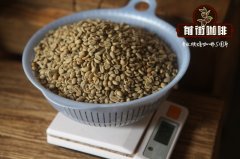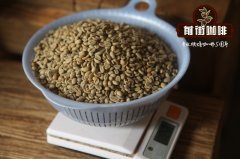Ethiopian coffee | what coffee beans are used for hand-made coffee? Yega-Elba Coffee Cooperative

Professional coffee knowledge exchange more coffee bean information please follow the coffee workshop (Wechat official account cafe_style)
Ethiopia is the country where coffee was first discovered. Today, there is still a lot of wild coffee picked and used by farmers in the virgin forest. Ethiopia is a country with poverty, drought and civil war. However, it is still the most important coffee producer in terms of coffee quality and output. Ethiopian coffee can be divided into two treatments. Natural washing treatment II. Natural sun treatment. Nowadays, every cooperative or even a small coffee farm in Ethiopia produces coffee beans of the above two treatments at the same time, such as the well-known Yegashev producing area in Taiwan or the Sidamo producing area.
For coffee beans washed with water, the consistency of fragrance, temperature, softness and low-key flavor of citric acid is high, while the coffee beans of sunburn method have strong aroma, weak and inconspicuous citric acid flavor, complex and changeable flavor, and flower or fruit fragrance is good.
Ethiopia is currently the country with the fastest production and development of coffee. Different producing areas not only make coffee different in terms of treatment, but also make aroma and taste different due to different processing methods, which often give people the wrong impression. For example, the aroma of Yegashev's sun-dried beans is different from that of Sidamo's sun-dried beans. Yegashev's sun-dried beans have a higher moisture content, coffee beans account for the majority of small grains, the aroma is low and stable, and the taste is thicker. The strong strawberry aroma of the sun beans in Sidamo is impressive, but the taste is thin.
In recent years, many emerging small producing areas or cooperatives in Ethiopia have sold in the market under the names of their own cooperatives, which shows confidence in their own coffee and hopes to establish brand reputation and loyalty in the coffee market. Coffee farmers insist on picking mature coffee beans and strictly handle every process. Both natural washing and natural sun drying show unexpected fragrance and excellent taste, which I think is why Ethiopian coffee is expected by coffee fans every year.
There is little difference in the appearance and size of coffee beans in the Shirba Coffee Cooperative, which can achieve a more perfect and consistent flavor of washed beans.
The Elba Coffee Cooperative (Chelba Coffee Farmers Cooperative Union), which is co-located with the former Yegashev Coffee Cooperative in the Yegashev producing area of southern Ethiopia, is composed of 490 coffee farmers and is a partner of the Rainforest Alliance in Ethiopia to help local communities and set up schools to help poor families by working directly with the Rainforest Alliance to get better prices. Consumers can also help poor coffee farmers by buying this type of coffee.
The Elba Coffee Cooperative is a Rainforest Alliance certified coffee bean with dark green and slightly defective beans in the shape of long rice similar to those of the previous Yegashev Cooperative.
The coffee beans of the Elba Coffee Cooperative grow in a 5700-foot primeval forest, and high-altitude coffee beans are not easy to grow and mature. September and February are coffee harvest times and are native Arabica beans. 2009 the Elba Coffee Cooperative in the new season is certified by the Rain Forest Alliance (R.A). The coffee beans treated by natural washing are grade G2, and the long rice shape of the beans is different from that of the previous batch of King's coffee (Brog has pictures), the same as Yegashev of the YCFCU Coffee Cooperative, it is different from the fermented fruit produced by multiple treatments of Ethiopian coffee in the sun. The acidity of citrus is meticulous and the aroma of jasmine is obvious. a good fragrance of jasmine is the most important way to do Beyejashev.
The Elba Coffee Cooperative is a Rainforest Alliance certified coffee bean with a Rainforest Alliance logo (green frog) on the bag.
Shallow baking City (fragrance): citrus acid balance is not strong and turns sweet and sour quickly, the conversion between sour and sweet is a good taste buds to enjoy, thin and not astringent taste with mint cool taste, the aftertaste of green tea is excellent flavor, the sweetness of orange slowly emerges and rises more and more, this baking degree of Yejashev is the most suitable for ice drop or cold soaking, because the jasmine fragrance in Yejashev is fully developed by soaking for a long time.
When brewing, it is recommended that the water temperature is set between 80 and 84 degrees to taste the peppermint acid of Yegashev, and when the water temperature is raised to 86 to 90 degrees, the most charming jasmine scent of Yegashev can be boiled.
Important Notice :
前街咖啡 FrontStreet Coffee has moved to new addredd:
FrontStreet Coffee Address: 315,Donghua East Road,GuangZhou
Tel:020 38364473
- Prev

Bolivia-Esso Coffee Farmers Association ASOCAFE Coop God of Love treatment Plant Water Bean Flavor and
Professional coffee knowledge exchange more coffee bean information please follow the coffee workshop (Wechat official account cafe_style) Bolivian Coffee-Esso Coffee Farmers' Association ASOCAFE Coop God's Love treatment plant the flavor and taste characteristics of washed beans? The Esso Coffee Farmers Association (Asociacion de Productores de Caf Taipiplaya) is a member of the FECAFEB Alliance and its office.
- Next

The story of growing La Llama coffee farm in Bolivia? What are the growing conditions of La Llama coffee?
Professional coffee knowledge exchange more coffee bean information please follow the coffee workshop (Wechat official account cafe_style) Bolivia La Llama coffee farm planting story? What are the growing conditions of La Llama coffee? This very special Java micro batch comes from a new farmer named Finca La Llama, who was planted in 2015.
Related
- Detailed explanation of Jadeite planting Land in Panamanian Jadeite Manor introduction to the grading system of Jadeite competitive bidding, Red bid, Green bid and Rose Summer
- Story of Coffee planting in Brenka region of Costa Rica Stonehenge Manor anaerobic heavy honey treatment of flavor mouth
- What's on the barrel of Blue Mountain Coffee beans?
- Can American coffee also pull flowers? How to use hot American style to pull out a good-looking pattern?
- Can you make a cold extract with coffee beans? What is the right proportion for cold-extracted coffee formula?
- Indonesian PWN Gold Mandrine Coffee Origin Features Flavor How to Chong? Mandolin coffee is American.
- A brief introduction to the flavor characteristics of Brazilian yellow bourbon coffee beans
- What is the effect of different water quality on the flavor of cold-extracted coffee? What kind of water is best for brewing coffee?
- Why do you think of Rose Summer whenever you mention Panamanian coffee?
- Introduction to the characteristics of authentic blue mountain coffee bean producing areas? What is the CIB Coffee Authority in Jamaica?

